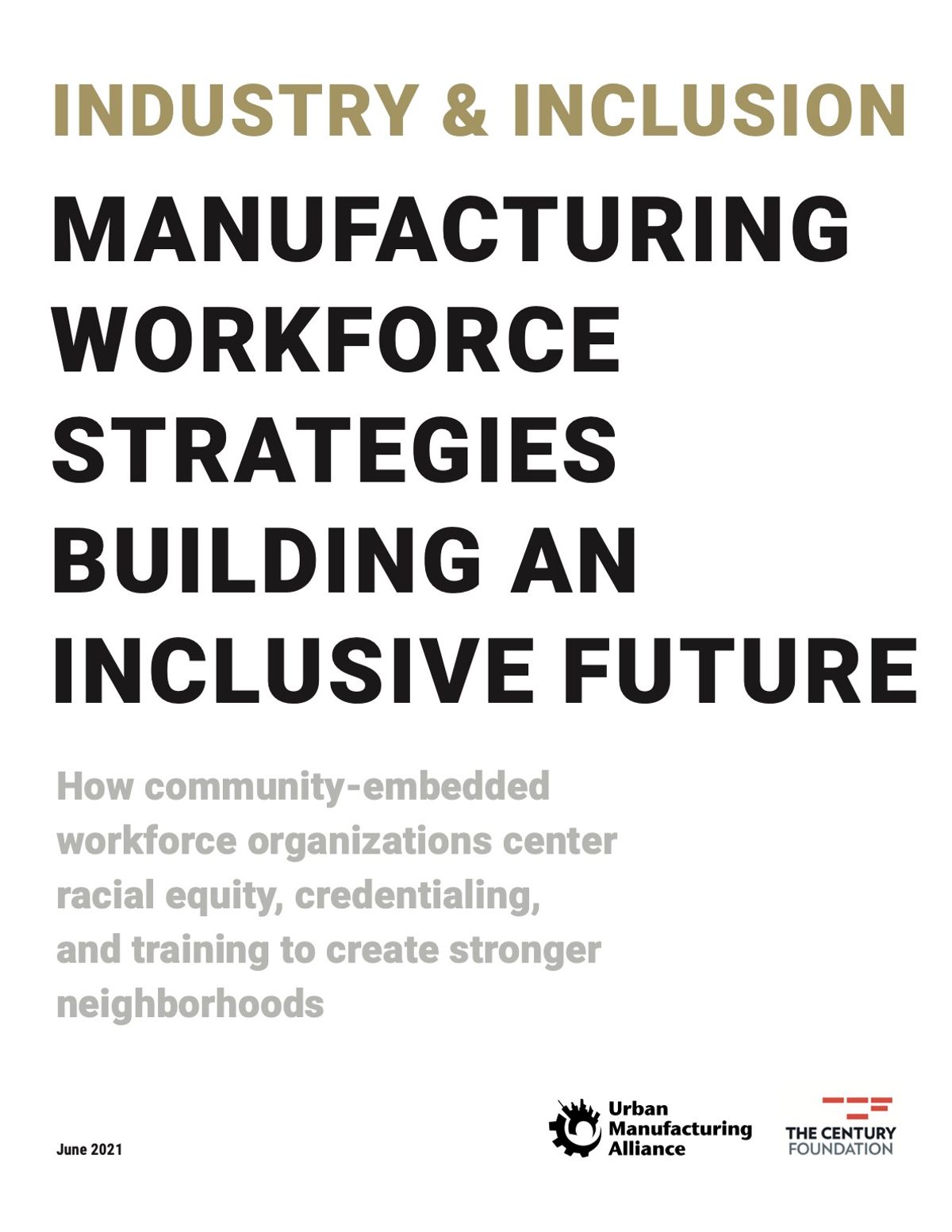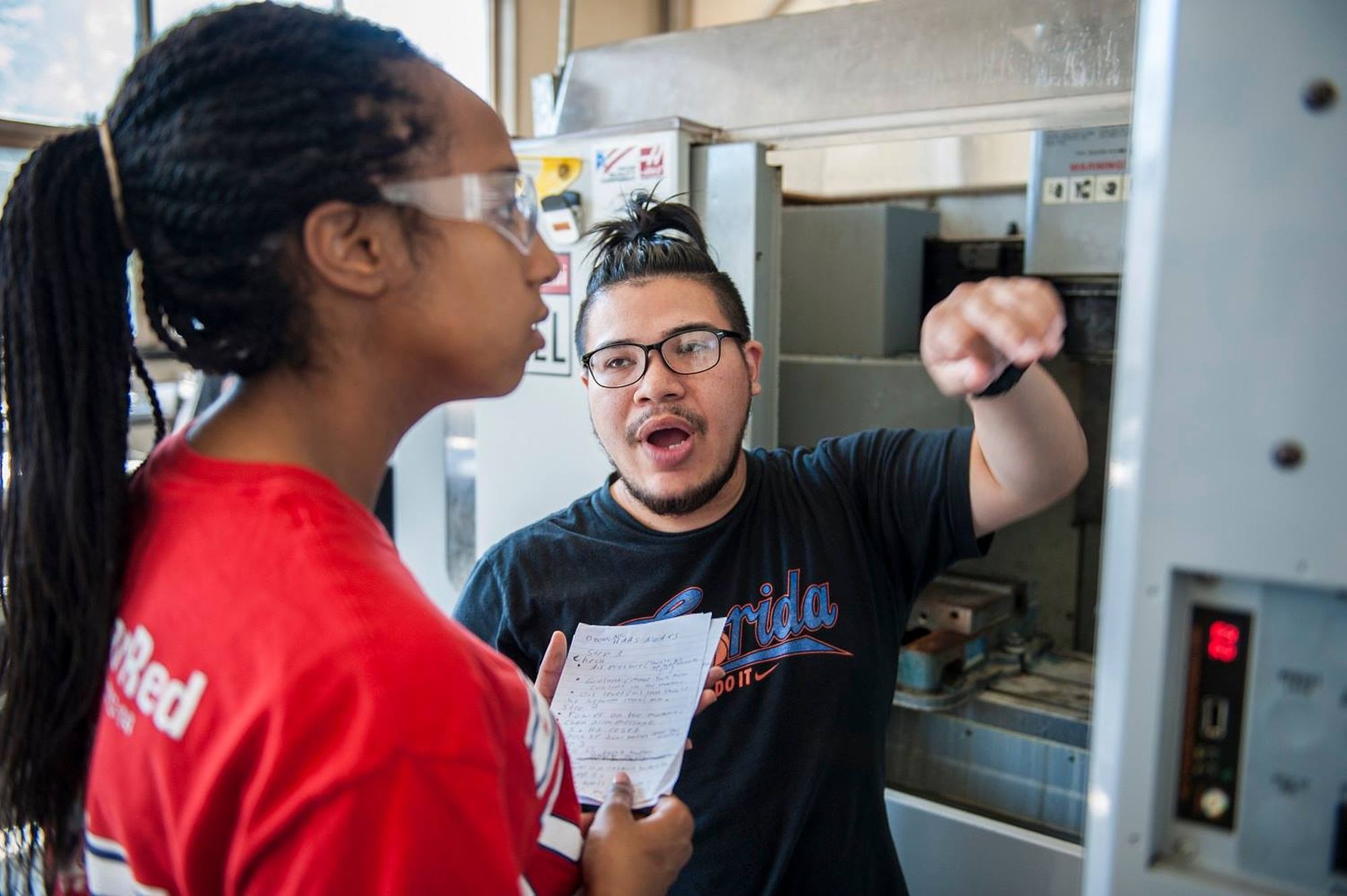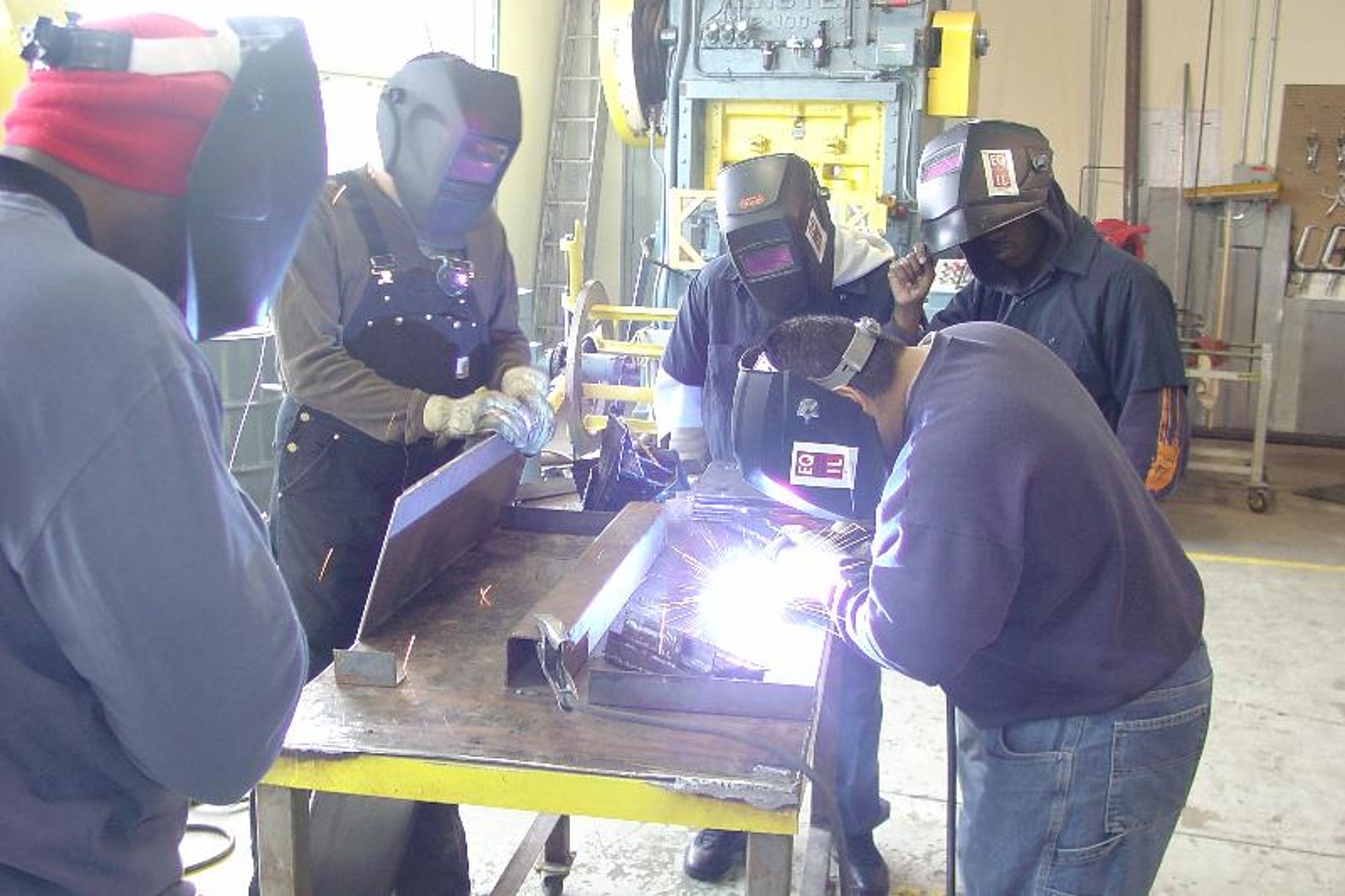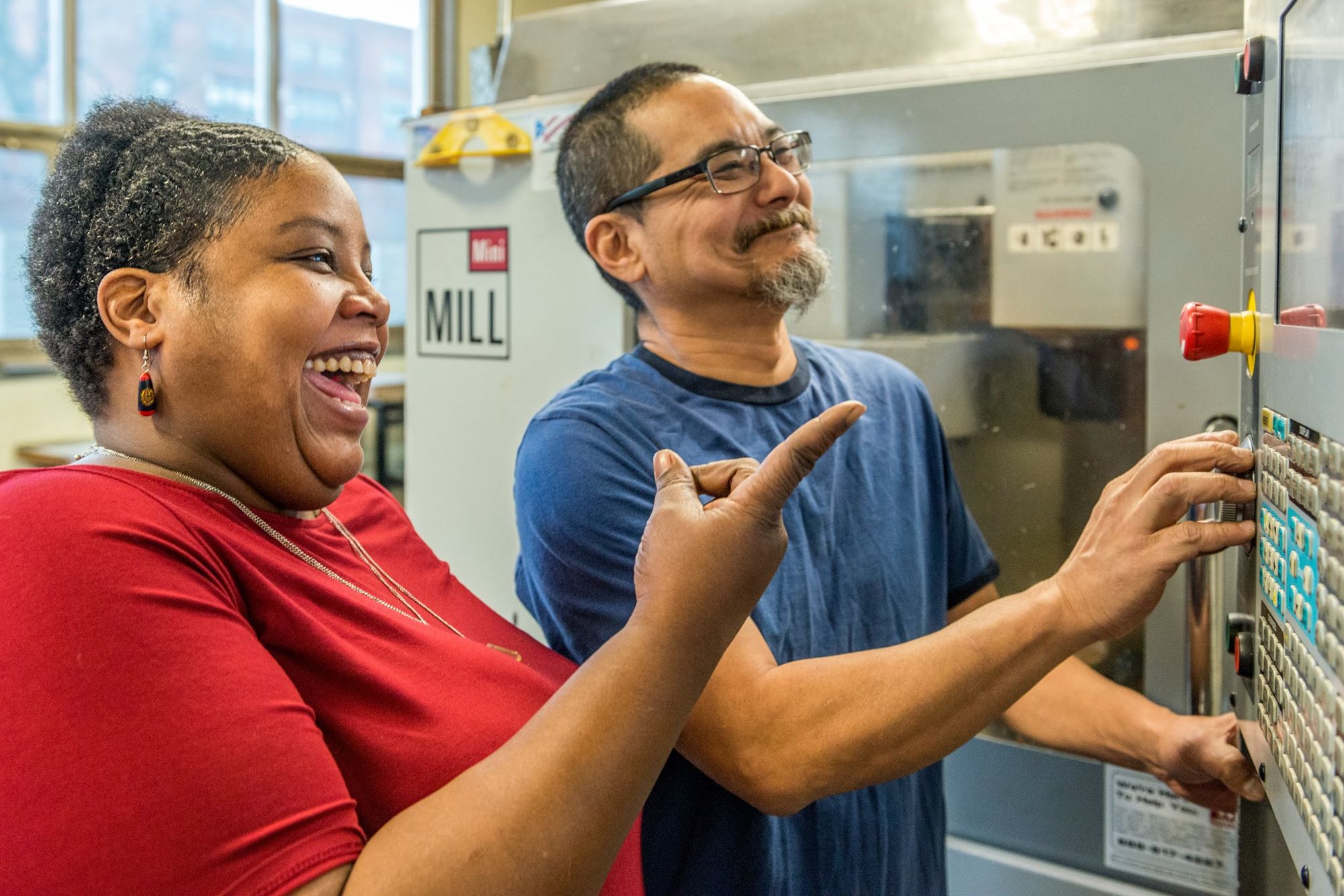One of the challenges facing JARC is that they get more opportunities than they can responsibly accept while meeting their high standards. This means JARC has to be very strategic about their growth, making sure that what they are adding is mission-driven and responsible, not just growing for growth’s sake. This reinforces the role that partnerships play in JARC’s success. A 2018 report by American Enterprise Institute1 helped JARC understand why Baltimore succeeded and why Metro West — a JARC training center located in the Chicago suburbs — failed. The research helped reinforce the role of and need for engaged stakeholders outside of JARC.
JARC sees themselves expanding in Chicago as they continue to operate their original site and headquarters in Ravenswoodand their newer location in Austin. These locations run their Careers in Manufacturing Programs, offering tracks in CNC operation, welding, and assembly. JARC is working on a new site in Chatham on the South Side. They will start by offering tracks in assembly and 3D Printing. These new expansions demonstrate JARC is getting better at evaluating opportunities to replicate and expand.
Beyond Chicago, JARC is working to expand their center in the Park Heights neighborhood of Baltimore. This means recruiting more trained staff, getting the word out to more potential applicants, and continuing to find new employers and support service partners. JARC is also in initial conversations to open a location in Rhode Island.
Now that JARC has had some experience replicating its model, each new location is getting easier. They have developed a specific approach and system that allows them to gauge whether the commitment to a new location is a good fit or whether they should change course and review other opportunities. By 2022, JARC plans to have three locations in Chicago, one in Baltimore, and one in Rhode Island, while still being open to other opportunities.
The evaluation of those opportunities is consistent with JARC’s updated strategic plan which incorporated a race, equity, and inclusion lens. This means JARC is working on being physically present where there are long-standing issues of racism and inequality — something they believe to be more important now than ever. That's where JARC wants to find themselves in the future: making a difference in distressed and marginalized neighborhoods that are being left behind.
- What Works: Replicating Success at the Jane Addams Resource Corporation




